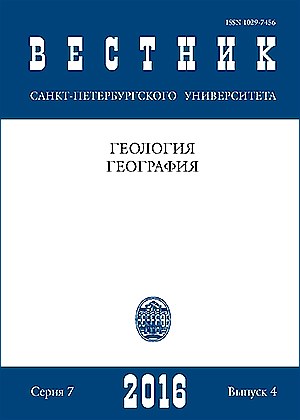Assess the signifi cance of dissolved CO2 in groundwater of North Stavropol UGS in case of its possible ground disposal
DOI:
https://doi.org/10.21638/11701/spbu07.2016.404Abstract
To date, the global question of recycling carbon dioxide to reduce its concentration in the growth atmosphere is highly relevant. The international community considers that the disposal of carbon dioxide will prevent global warming. Many countries, including Russia, signed the Kyoto and Paris climate agreement establishing quotas for greenhouse gas emissions. One method is utilization of CO2 underground disposal. The world has already implemented a number of projects. This article presents (for the first time in Russia) an estimation of the CO2 burial opportunity to consider the current example of the Pelagiadinskogo North Stavropol UGS through analytical methods as well as with the help of numerical simulation of heat and mass TOUGH. The assessment of CO2 dissolution of residual waters and contour UGS is described in detail.
Keywords:
underground disposal of carbon dioxide, underground gas storage, heat and mass transfer modelling, groundwater
Downloads
References
References
Downloads
Published
How to Cite
Issue
Section
License
Articles of "Vestnik of Saint Petersburg University. Earth Sciences" are open access distributed under the terms of the License Agreement with Saint Petersburg State University, which permits to the authors unrestricted distribution and self-archiving free of charge.






